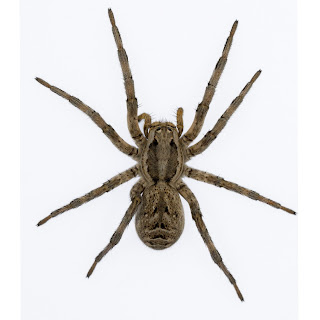Spiders:
The air breathing arthropods with eight legs and fangs that inject venom…yes! We are talking about the spiders. Spiders are far more important on our planet than we may know. It is said that wherever we are, there is likely to be a spider within a meter of us.
Spiders are found worldwide on every continent except for Antarctica. They have learned to survive in almost every habitat except in the air and the sea. There are 4,000 mammal species and more than ten times that many spider species. With more than 45,000 different species of spiders, they are the largest order of arachnids and rank 7th in total species diversity. Only a small number of these are said to be dangerous to humans, and less than 30 have been responsible for human deaths.
Most spider species have eight eyes, though some have six. Although, many have a bad vision, there is a spider called the jumping spider, which is believed to see more colours than humans can. Though not all spiders build webs, every species produces silk. They use the strong, flexible protein fibre for many different purposes: to climb (just like the Spider Man!), to tether themselves for safety in case of a fall, to create egg sacs, to wrap up prey, to make nests, and more. A new study also reveals that a spider's silk web is more than a home; it's also a stringed instrument! Which is why they are believed to be sensitive to music. (Homeopaths do you remember studying Tarentula hispanica!)
Most species of spiders are carnivorous, that either trap flies and other insects in their webs, or hunt them down. They can’t swallow their food as it is, so they inject their prey with digestive fluids, then suck up the liquefied remains.
Spiders in Homeopathy:
Homeopathy is the practice of medicine that embraces a holistic and natural approach for the treatment of the sick. A fascinating aspect of homeopathy is that we even have remedies made from spiders. Each spider remedy is unique, with a different set of symptoms however they share many of the same characteristics. Tarentula hispanica is our best-known spider remedy and is most well-represented in the Repertory, however, Aranea diadema, Latrodectus mactans, Mygale Lasiodora, Tarentula cubensis and Theridion are also some of the frequently used ones. Few therapeutic hints of these medicines are as under:
Aranea diadema - medicine made from the most commonly found garden spider is used in treatment of malaria and its complications.
Latrodectus - medicine made from the black widow spider is used to manage severe agonizing chest pain occuring in case of Angina or Heart attacks.
Mygale Lasiodora - medicine made from the black cuban spider is used in cases of chorea and other neurogenic disorders.
Tarentula cubensis - medicine made from hairy spider is used in the treatment of big scary carbuncles usually occuring in diabetics.
Tarentula hispanica - medicine made from the spanish spider is used in hyperactive and restless children suffering from ADHD.
Theridion - medicine made from the orange spider is used in cases of vertigo, motion sickness, seasickness, etc.
Some of the themes common in spider remedies are as under:
- lack of perception of fatigue
- extreme activity with a sense of hurry,
- sensitivity to sound, music or vibration,
- neurological disturbances,
- joint problems,
- digestive problems,
- relationship and sexual difficulties.
- awareness of suffering.
- desire to travel far and often.
- well educated and serious. and
- relief from open air, music, dance, coffee and cigarettes.
|
S.No. |
Spider Remedy |
Common name |
|
1. |
Aranea diadema |
Papal cross spider; Garden spider |
|
2. |
Aranea ixobola |
Black cross spider |
|
3. |
Aranea scinencia |
Grey spider |
|
4. |
Aranea avicularis |
Mygale avicularis |
|
5. |
Mygale lasiodora |
Black Cuban spider |
|
6. |
Latrodectus mactans |
Black widow spider |
|
7. |
Latrodectus hasselti |
Redback spider |
|
8. |
Latrodectus katipo |
Poison spider; New Zealand spider |
|
9. |
Tarentula cubensis |
Hairy spider; Cuban spider |
|
10. |
Tarentula hispanica |
Spanish spider |
|
11. |
Theridion curassavicum |
Orange spider |
|
12. |
Atrax robusta |
Trap-door spider |
|
13. |
Loxosceles reclusa |
Brown recluse spider |
|
14. |
Tegenaria domestica |
House spider |
|
15. |
Tela arnaea |
Spider’s web |
Note: The author disclaims all liability for any loss or risk, personal or otherwise incurred as a consequence of use of any material in this article. This information is not a substitute for professional medical advice, diagnosis or treatment.












So crisp description doctor
ReplyDelete